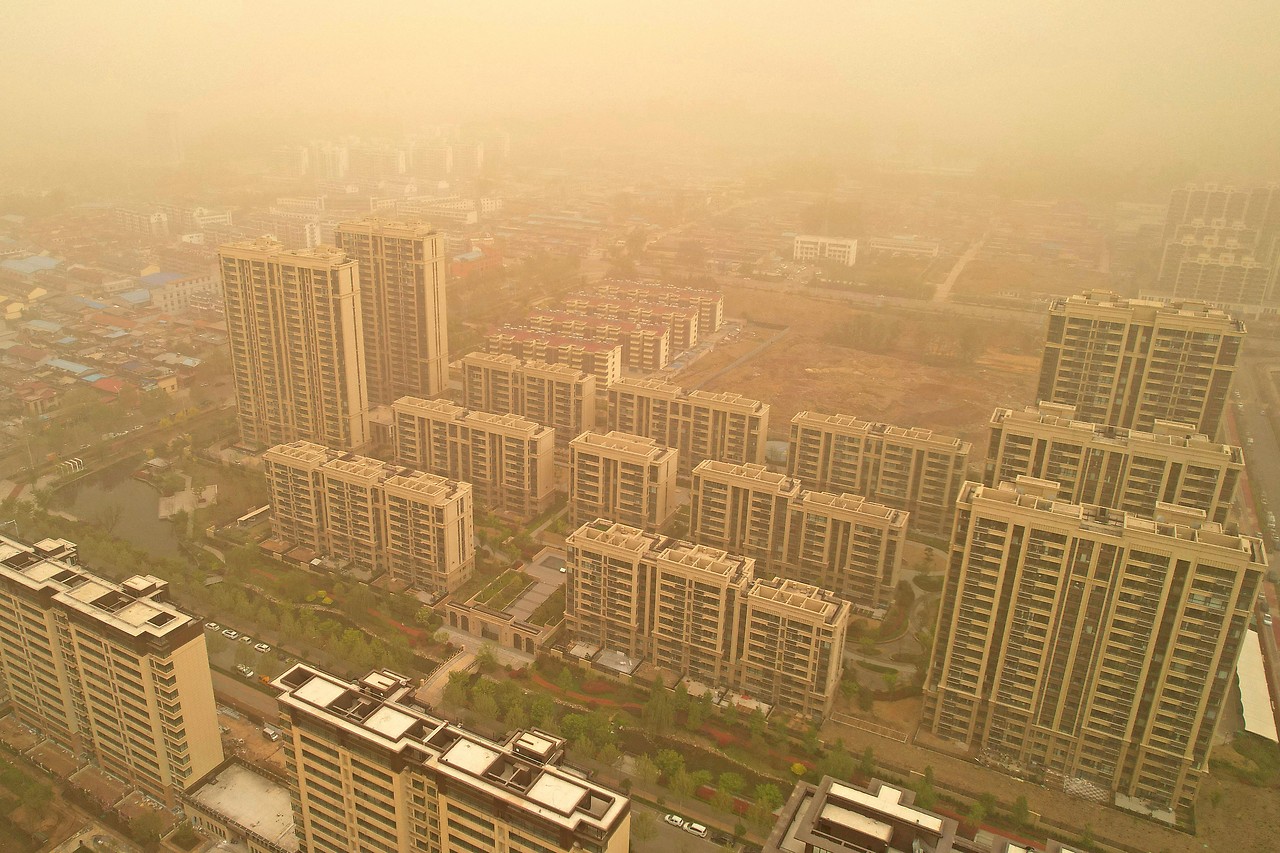Beijing’s air pollution index rose well above the scale limit to 1,300 on Monday evening, while levels of 150 are already considered “unhealthy”. Visibility dropped to a few tens of meters.
The sandstorm came from southern Mongolia and, in addition to the 23-million metropolis, also hit other northern regions such as Inner Mongolia, Heilongjiang and Xinjiang, the ministry reported. An area of 2.29 million square kilometers was affected.
The weather center reported that northern China has already experienced more sandstorms this year than the average for the past decade.
With extremely high concentrations of PM10, the air index in Beijing was still around 900 on Tuesday morning, while a dust bell hung over the capital. Only during the course of the day did it slowly clear up again with stronger winds.
Spring is sandstorm season
Spring is the sandstorm season in northern China. Strong winds carry sand and fine dust from the Gobi desert and Mongolia to the densely populated industrial regions that are already heavily polluted by smog. In the provinces of Liaoning, Heilongjiang and Inner Mongolia, pollution levels exceeded the available scale in many places. Warnings were also issued in Hebei, Gansu, Ningxia, Shaanxi, Shanxi, Jilin and parts of Xinjiang provinces.
China has a four-tiered alert system: red is the highest alert level, followed by orange, yellow, and blue. The last two lower warning levels were active, although the air was full of tiny particles that penetrate the lungs when breathing.
Aggravated by drought
According to the “Global Times”, this year’s particularly low rainfall has led to a severe drought since the winter. This in turn makes it easier to carry dust and sand away in the spring. Meteorologists expect the situation to gradually improve in late April or early May as temperatures and precipitation levels rise.
According to the Ministry of Disaster Management, there were six sandstorms in the first quarter. Five of these also affected Beijing – one in January, three followed in March and the current storm in April. According to the authorities, the number of sandstorms this year is higher than in the last ten years.
The level of air pollution is the same. According to “Global Times”, the environmental conditions in northern China have been gradually improved by significantly more planting. In Mongolia, on the other hand, there is too little reforestation. At the same time, there was significantly less precipitation there this year compared to the 20-year average.



